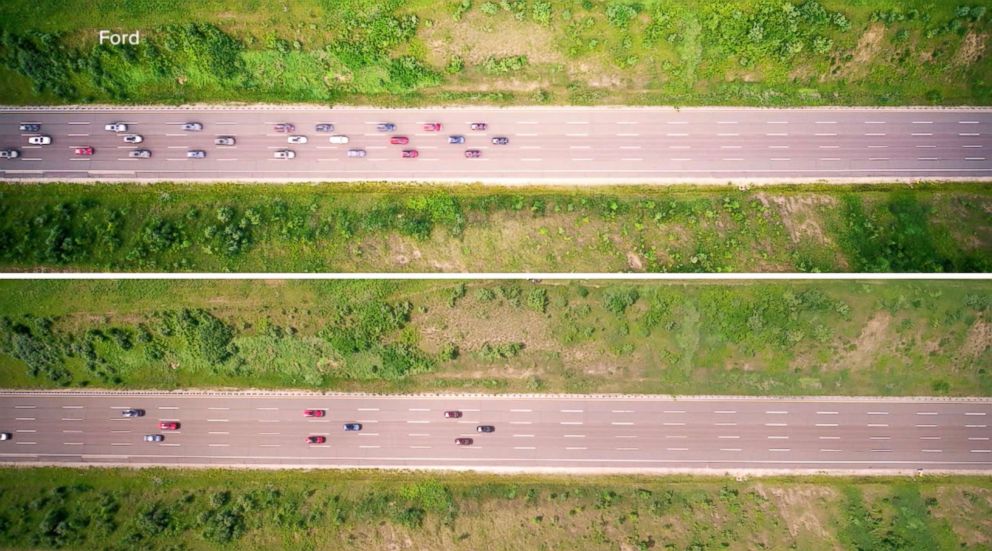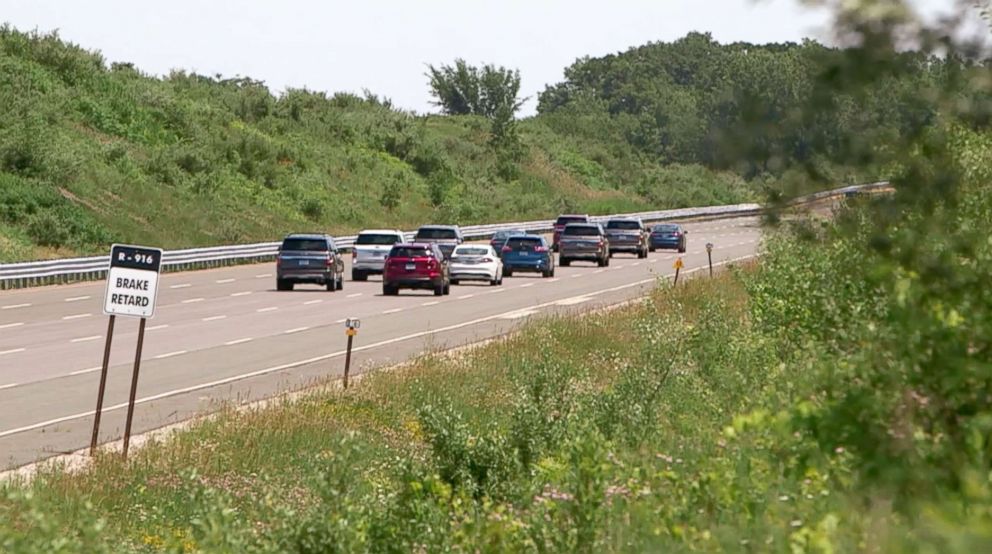Ford’s adaptive cruise control: How it could reduce stop-and-go traffic
Ford Co-Pilot360 launched earlier this year as a new approach to adaptive cruise
It’s an all too common problem for drivers in the U.S.: Sitting in idle traffic and staring at bright red lights as time passes.
For many vehicles, adaptive cruise control systems have become a common feature and safety experts have shown mixed opinions on these emerging technologies.
But engineers at Ford recently found an unexpected benefit: traffic jam relief.
The United States in 2017 was ranked as the most congested developed country in the world according to a report from INRIX, a global transportation service company. They found that drivers spent an average of 41 hours a year in traffic during peak commuting hours.

One culprit includes what are known as “phantom” traffic jams, or backups, not caused by an actual traffic incident, like a crash, according to Ford. Unnecessary braking, merging without signaling and distracted driving can all delay traffic for no apparent reason.
“Humans, when we're not paying attention we make these traffic jams worse and these adaptive cruise control systems we showed can actually outperform the human drivers in dissipating these waves,” Civil and Environmental Engineering Professor Dan Work says.
The Detroit-based manufacturer teamed up with Vanderbilt University to launch an adaptive cruise control system called Co-Pilot360 that has the potential to eliminate stop-and-go traffic.

Ford Co-Pilot360 launched earlier this year as a new approach to adaptive cruise control, featuring technologies like automatic emergency braking, pedestrian detection and a blind spot information system aimed at keeping drivers safe “amid rising congestion and distractions.”
If a car in front of another equipped with Co-Pilot360 speeds up or slows down, the adaptive cruise control can automatically adjust the speed accordingly to maintain a safe and consistent distance between the two vehicles.
Originally introduced in 2006, Ford’s adaptive cruise control technology is now available in 71 percent of its U.S. models.
While this design was originally developed for highway driving, Ford engineer Michael Kane said the its usefulness in congestion came as an unexpected benefit.
“It’s not something that when we were designing it, we intended to do,” Kane said. “It was really fun to see the effect.”
Although not all cars require adaptive cruise control, Work says this type of system can ease commutes, potentially smoothing out traffic.
“We're trying to understand what the potential impacts of these technologies that are already on the roadway today can be and the upside is that there could be positive benefits to turning on your adaptive cruise control and outperforming those distracted drivers,” Work said.
A recent study from the Insurance Institute for Highway Safety warns cars with electronic driver assist systems, like adaptive cruise control, may not see vehicles that are already stopped ahead and could cause a crash if drivers are not paying attention. Manufacturers have instructed drivers that these features do not make the vehicle autonomous and drivers should always be alert and ready to respond.






